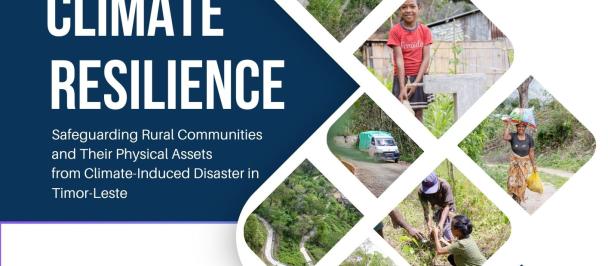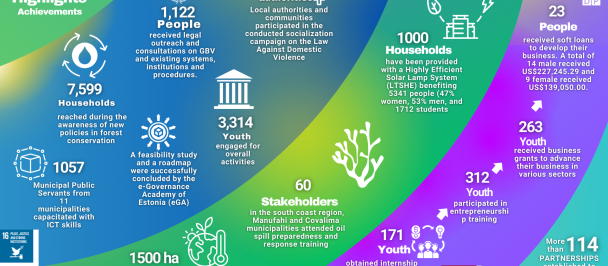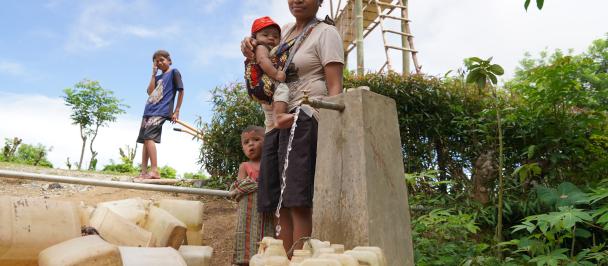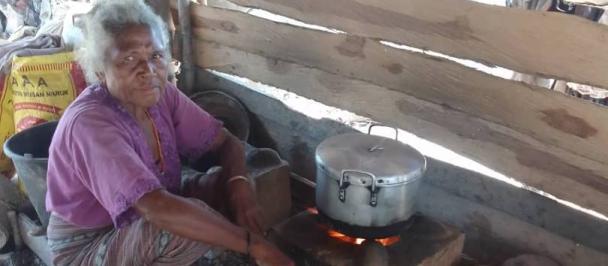Safeguarding rural communities and their physical assets from climate-induced disasters in Timor-Leste
Summary
Thee six-year project ‘Safeguarding Rural Communities and their Physical Assets from Climate Induced Disasters in Timor-Leste’ will support the implementation of 130 climate-resilient small-scale infrastructure across six municipalities that have been identified as most vulnerable to climate-related hazards. Approximately 175,840 people – around 15% of the population – will benefit from 38 new water supply systems, 25 irrigation schemes, 216 kilometres of rural roads, and 20 flood-protection infrastructure.
The project will also introduce transformative adaptation approaches to planning and implementation of the country’s rural infrastructure development programmes under village and municipality levels development planning frameworks.
Further, it will strengthen ecosystems services through catchment management approaches and reforestation, as well as bolster Timor-Leste’s policies, regulations and institutions related to climate change and disaster preparedness. This includes developing risk information services, vulnerability mapping and monitoring.
Background
As Timor-Leste continues to experience unpredictable weather patterns and the impacts of more intense wet seasons and longer dry seasons, government representatives from the Secretary of State for Environment, Ministries of Agriculture and Fisheries, Interior (Secretary of State for Civil Protection), Public Works, and State Administration opened a United Nations Development Program inception workshop for a new adaptation project, backed by the global Green Climate Fund, to help protect rural communities.
More than 70 percent of Timorese live in remote rural areas with little infrastructure. Their lives and livelihoods are significantly impacted by climate-related events such as floods, landslides, erosion, sea level rise, and droughts, which have been increasing in intensity in Southeast Asia in recent years. In the most recent disasters to hit the country, an unexpected late wet season caused widespread flooding in Dili in March, while drought ruined crop production in other areas, dramatically increasing food insecurity among subsistence farmers who make up over 65 percent of the population.
Major
Achievements
- A climate risk information system was developed through the launch of a multi-hazard risk and vulnerability assessment (MHRVA) tool and the Timor Emergency Response System (TERS), a tool to collect loss and damage data in 2023 for better planning and emergency response.
- Rehabilitation/Construction of 10 small-scale climate-resilient small-scale rural infrastructures has been completed (6 rural roads and 4 irrigation schemes) with the GCF funding, 8 schemes in the advanced stage of implementation ( 4 roads, 2 glasses of water supply schemes, and 2 irrigation systems) and 26 units completed through government co-financing.
- For the protection and sustainability of the small-scale rural infrastructure located in hazard-prone areas, 490 hectares of land have been planted for catchment management and rehabilitation so far ( 58 through GCF funding and 432 under government co-financing)
- The capacity of all the stakeholders especially relevant government officials is being developed through appropriate means such as trainings and guidelines and SOPs development on relevant topics of risk information system use, climate resilience construction, and catchment management for the greater impact and sustainability of the project.
Project Outcome
The project aims to:
|
GCF-SRC baseline video - showcasing the current issues and project solutions, to help raise awareness about the challenges due to climate change and the changes in terms of mainstreaming climate change into infrastructure planning and development at the local level.
Related Materials
GCF Factsheet 2021 | Project document |
Project Details
National
Levels of Intervention
Key Implementers
Country Office Local Governments National Governments Non-Governmental Organizations Private Sector Partners United Nations Development Programme (UNDP)
Green Climate Fund
Source of Fund
Funding Amounts
US$22.356 million via Green Climate Fund grant
US$36.687 million via the Government of Timor-Leste; $400,000 via UN Development Programme
Project Partners
National Directorate for Climate Change, Ministry of Commerce, Industry and Environment United Nations Development Programme (UNDP)
Project Dates
2020 to 2026

 Locations
Locations



